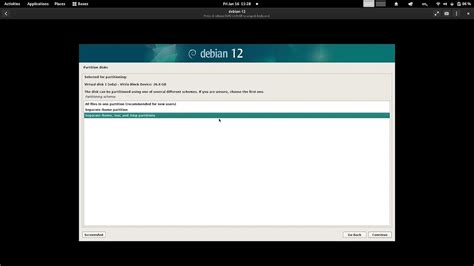In the world of Linux, traditions often clash with new technological advances. Debian’s latest move to change the default behavior of the /tmp directory to use tmpfs is a prime example, igniting a debate among developers and system administrators. The transformation of /tmp into a tmpfs (temporary file system) means that by default, it operates in RAM, thus getting automatically wiped on reboot. This change highlights the ongoing tussle between preserving established practices and embracing incremental improvements to system performance and reliability.
A notable comment from ‘candiddevmike’ suggests that the traditional /var/tmp directory is a technical debt and unsuitable for temporary files that need persistence beyond a reboot. He argues that such files should reside under more appropriate locations like /var/cache or /var/lib. It’s vital to consider that tools like Podman are using /var/tmp, contributing to user frustrations. The sentiment resonates with those who long for standardization in directory usage as stipulated by the XDG Base Directory Specification. According to the XDG, user-specific data files should be stored in dedicated directories like $XDG_CACHE_HOME and $XDG_CONFIG_HOME. Yet, the partial adoption of this spec leads to inconsistent application behaviors, exacerbating developers’ grievances about predictability and maintenance.
However, not everyone is on board with the XDG spec’s purported solutions. ‘zbowling’ counters that the spec’s incomplete adoption has led to a chaotic state where some applications conform while others do not. This half-hearted implementation causes unnecessary complications and divergent behaviors across apps. He underscores the potential of containerizing applications using solutions like Snapcraft and Flatpak to sidestep these directory conflicts by providing isolated environments with consistent behaviors. This approach could mitigate issues of data persistence and environmental contamination, offering a way forward that eschews the need for stringent, universally-adopted standards.
On the other hand, ‘NekkoDroid’ highlights the practical dichotomy between /tmp and /var/tmp. While /tmp is often RAM-backed for small files, providing speedy access and clean slates on reboot, /var/tmp tends to hold larger files on disk, offering persistence. He suggests accelerating cleanup schedules for /tmp—usually only reset after a typical uptime longer than most users maintain—thus ensuring more aligned expectations and reduced surprises in data persistence. His personal usage favors more frequent cleanups to mitigate the risk of data bloat, reflecting the sentiment that more manageable /tmp durations could address many operational grievances without entirely shifting away from historical directory practices.
The caution against transitioning valuable data into tmpfs without careful consideration comes across glaringly through various comments. ‘viraptor’ emphasizes that persistent caches, such as those used by web browsers, can significantly enhance performance. He argues that loss of such caches on each reboot could slow down app performance, negating potential gains afforded by a tmpfs. This persisting cache utility stands as a testament to the nuanced balance needed between speed (RAM) and reliability (disk), urging developers to think carefully about what data truly belongs in /tmp versus more permanent storage locations.
From a practical system administration standpoint, ‘shadowgovt’ acknowledges the thoughtful and cautious approach often characteristic of Debian, contrasting it with the swifter, end-user-focused changes in commercial operating systems. His perspective sheds light on the balance between stability and innovation. He suggests that consistency and minimal disruptions during upgrades are foundational to Debian’s philosophy, which appeals to a broad user base that values predictability. Yet, the suggestion to adopt container-based solutions could offer a middle ground, allowing users to benefit from both stability and compartmentalization without compromising the integrity or operational coherence.
Lastly, as noted by users like ‘probably_wrong’, the automatic deletion of files within /tmp and /var/tmp during runtime raises concerns about potential disruptions. This can especially impact developers and sysadmins who rely on the ephemeral storage of configurations or temporary data. There’s a vital call for improved documentation, user education, and perhaps even an interactive querying during installation to allow users to customize their storage preferences rather than enforcing a one-size-fits-all policy. Configurations like `sudo mount -t tmpfs ~/tmp` are suggested for those who need tailored solutions, echoing the traditional Unix philosophy of empowering users through configurability and flexibility.
In closing, the transition to tmpfs for /tmp by default in Debian is a microcosm of broader challenges in system management and user expectations. While tmpfs offers speed and reduced wear on SSDs, it requires careful consideration of specific use cases and needs for data persistence. By fostering community discussions, considering containerization, and providing flexible configuration options, Debian and other distros can continue to evolve in ways that respect both legacy practices and modern performance metrics. To dive deeper into the specifics of the XDG Specifications, you can check the official documentation [here](https://specifications.freedesktop.org/basedir-spec/basedir-spec-latest.html).


Leave a Reply